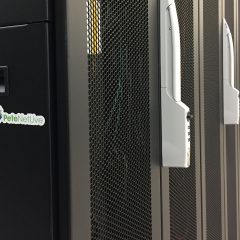VMware: Cannot Resize a VMs Hard Drive?
KB ID 0001704 Problem One of the lads in support messaged me this week, he needed to raise the size of the hard drive on a VM, and the option was greyed out (not available). Solution Now assuming you actually have the rights to do this, the problem is ‘nearly always’ that the ‘disk’ in question has an active snapshot on it. Remove your snapshots first. Now you can raise the size. Don’t forget: In your OS...
VMware vSphere Hot Add and Hot Plug
KB ID 0000527 Problem I was trying to hot add some memory to a VM the other day, and found the option grayed out. Normally I’d just down the VM, add the memory, then bring it back up. But it was a production server and I was pretty sure the OS supported it. A quick Google search told me why it was grayed out, but it also transpired there was little to no information on what version of Windows hot add and hot plug would work...
Terminal Server / Remote Desktop Services Server – Printer Not Working (Adding Print Drivers)
KB ID 0000850 Problem Windows Server 2008 R2 and 2012 are a lot better with printing support over remote desktop, that their predecessors were. But to be able to print to your remote users ‘local’ machines. The TS/RDP server still likes to have the correct drivers installed. What about Easy Print? Easy Print (Introduced with Server 2008 R2) is a ‘proxy’ service that simply sends all print processes to the...
Adding Drivers to Images on WDS
KB ID 0000314 Problem Before Server 2008 R2 when we needed to inject drivers into our WDS images we had to do it like this. Now however the process is a lot more elegant! Simply import the drivers into WDS, then inject them into the boot images (Yes the boot images NOT the Windows Images you are deploying!) Solution Add Driver Packages to Image is “Greyed out” If while attempting to add drivers, the option to “Add...



